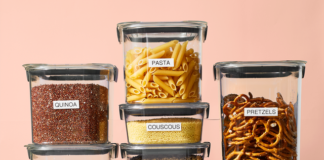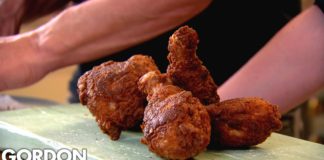
Most people know that they should never workout on a concrete floor. Doing so will expose your body to undue stress and possible injury. Spend even a little time working out on the wrong type of home gym floor and you could feel the ill effects for hours, days or even longer.
Choosing the correct flooring for a home gym allows you to workout longer and feel more comfortable while ensuring the integrity of your joints, muscles, ligaments and tendons. Whether you’re lifting free weights, engaging in aerobics or doing a killer exercise program, you need to do so on the proper floor.
Basic Guidelines
First, you need to consider four questions when it comes to choosing flooring for a home gym. Answering these questions will allow you to determine which type of floor is right for you.
Type of Workout
If you’re going to be doing a high impact workout, then you’re going to need a high impact floor that offers substantial absorption of energy and total stability. That type of workout demands a full rubber gym floor. If you’re using machines such as a treadmill, bike and elliptical, the floor is still important but obviously the workout machines will be taking more of the abuse than the floor. In this case in order to protect the floor, you’ll want a substantial rubber or foam mat between the machine and floorboards.
Subfloor
If your home gym has a wood floor, your covering can usually be a bit thinner than if it’s on something less forgiving than concrete. Wood subfloors give a bit, which is less stressful on your body. But concrete is about as firm and unresponsive as can be.
Style and Color
The simpler the floor when it comes to color, the cheaper it will be. Basic black or blue are less expensive than something that has a design in it or a special logo. If you’re trying to match your home décor, you may end up paying more for a gym floor than if you’re simply attempting to create a safe place where you may workout safely and comfortably.
Price
The thicker the floor, the more expensive it will be. A standard thickness that works well for most home gyms is 3/8”. However, if you need ¾” for more padding, it’s available and not that much more expensive.
The other thing to be mindful of when it comes to cost is that unique colors and floors with logos and artwork will cost more. If you’re on a budget, then try to get the best floor possible for the amount of cash you have to spend.
Types of Gym Floors
There are three basic types of gym floors. These range in price, with the cheapest being rubber mats and the most expensive rolled rubber. When it comes to price, interlocking tiles fall in between.
Rubber Mats
You’ll find rubber mats that range in thickness as they are available in ½-inch, 3/8-inch and ¾-inch thicknesses. These are very durable and the least expensive of your choices. Generally they are produced in a few basic colors, including black, blue and tan.
If you’re using very heavy free weights, which can put a lot of stress on your limbs, then use a mat that’s at least 3/8-inch thick. For placement under machines, ½-inch mats are fine.
One thing to keep in mind is that mats that are made of 100% recycled rubber can give off a strong, cloying odor that can be unpleasant. If your home gym is in an enclosed area that lacks ventilation, you’ll want to stay away from recycled rubber. However, this type of mat would be fine in a gym that’s set in an area that has good airflow.
Interlocking Tiles
Interlocking tiles are easy to install and are flexible enough to be picked up and moved quickly. These tiles, which usually come on 3/8-inch or ½-inch thicknesses, wear well, and when one gets damaged, they are easy to replace. You may purchase these in solid black or with a color fleck. The tiles that offer a little bit of color hide dirt better, making them a bit easier to maintain. Interlocking tiles are generally stable, absorb impacts well and are versatile as the workout area can be reconfigured whenever necessary.
Rolled Rubber
If you’re looking for variety in terms of floor thickness, then rolled rubber is a good choice. You’ll find this gym floor comes in 1/8-inch, ¼-inch, 5/16-inch, 3/8-inch and ½-inch thicknesses. Rolled rubber, which is good for covering large areas, is available in 70-foot or 80-foot sheets that are four-feet wide.
This type of flooring is easy to cut and install. It’s simple to create a seamless effect between rolls, and if a piece of flooring is damaged, it can be cut out and replaced. You can cover a large area quickly with rolled rubber. Although like the other home gym floors it does not need to be glued down, it is recommended that an adhesive be used on thinner floors to prevent tearing.
Safety is Key
Flooring for a home gym needs to be geared towards ensuring a safe workout that puts the right types of stress on the body. A good gym floor can protect your body from injury and wear and tear. Shop around, test out various coverings and find the best gym flooring for your workout.






































